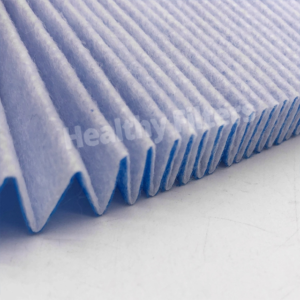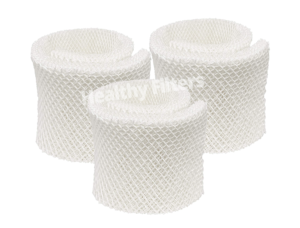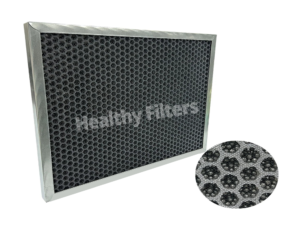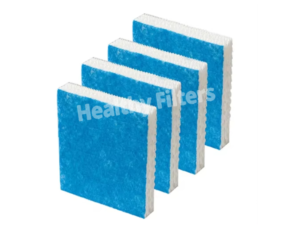Metal mesh filter is a durable filter component based on metal material weaving or stamping. With its high mechanical strength, extreme environment resistance and reusability, it is widely used in industrial screening, liquid/gas pre-filtration and high temperature and high pressure scenarios. It achieves efficient interception through a precisely designed mesh structure, has both long life and economic advantages, and is a core filtration solution in the fields of chemical, energy, food processing, etc.
Core structure and material characteristics
Material type
Stainless steel: 304/316 stainless steel is the mainstream choice, acid and alkali resistant, high temperature resistant (≤800℃), 316L model has enhanced resistance to chloride ion corrosion, suitable for marine or chemical environment.
Aluminum/copper alloy: Lightweight aluminum mesh (temperature resistance ≤300℃) is suitable for ventilation systems; copper mesh has natural antibacterial properties and is used for medical or drinking water filtration.
Nickel-based alloy: resistant to high temperature (≤1200℃) and highly corrosive gases (such as H₂S, SO₃), used in petrochemical and flue gas treatment.
Process and structure
Weaving process: Plain, twill or dense weave to form uniform mesh, pore size range 20μm-10mm (corresponding to mesh size 10-500 mesh), single-layer or multi-layer composite structure can be customized.
Stamping: Regular hole array (round hole, square hole or hexagonal hole) is formed by die stamping, with an opening rate of 30%-70%, which is suitable for high flow requirements.
Core functions and advantages
Efficient interception and high throughput
Accurately intercept target particles (such as metal chips, gravel, fiber), liquid filtration accuracy of 10μm, gas filtration efficiency meets ISO Coarse or MERV 4-8 standards.
High opening rate design reduces pressure drop (initial pressure difference <50Pa), and liquid flow rate can reach 5-20m³/h (depending on pore size and pressure).
Extreme environment tolerance
High temperature resistance: Stainless steel mesh can withstand temperature differences from -200℃ to 800℃, suitable for molten metal filtration and engine intake systems.
Corrosion resistance: 316L stainless steel can withstand pH 1-14 environment, and nickel mesh can resist strong acid and oxidizing media corrosion.
Impact resistance: The high-rigidity structure can withstand high-pressure water jets (≤50MPa) or mechanical vibration to avoid deformation and damage.
Washable and long life
Supports ultrasonic cleaning, chemical solvent immersion or high-temperature incineration regeneration, with a recycling frequency of more than 100 times and a life of up to 5-10 years.
Surface electrolytic polishing or coating treatment (such as PTFE) enhances anti-stickiness, reduces the adhesion of pollutants, and extends the maintenance cycle.
Safety and environmental protection
Metal materials are non-toxic and non-shedding, and comply with FDA and EU 10/2011 food contact standards;
100% recyclable, reducing waste generation and supporting circular economy.
Typical application areas
Industrial manufacturing:
Cutting fluid filters metal debris to extend tool life;
3D printing powder grading and screening to ensure particle size consistency.
Energy and Chemical Industry:
Catalyst particle recovery in petroleum refining;
Gas turbine intake air filtration of sand, dust and salt spray to protect blades.
Food and Pharmaceuticals:
Dairy production line intercepts impurities and complies with GMP certification;
Pharmaceutical fluid filtration to avoid liquid drug contamination.
Water treatment and environmental protection:
Seawater desalination pretreatment intercepts algae and shellfish;
Industrial wastewater metal ion adsorption and particle separation.
Aerospace:
Aircraft fuel filtration to prevent engine blockage;
High-temperature exhaust particle capture to reduce emission pollution.
Selection and Maintenance Guide
Key Selection Parameters
Aperture and mesh: Select according to the target particle size (such as 100 mesh corresponds to 150μm pore size), and liquid filtration needs to be adjusted in combination with viscosity.
Corrosion resistance requirements: 316L stainless steel is selected for acidic environment; nickel mesh or titanium mesh can be selected for alkaline scenarios.
Pressure and temperature: High-pressure systems (≥10MPa) require thickening of the mesh layer or support frame.
Installation and cleaning
Sealing design: Use flange, clamp or welding connection to ensure no leakage;
Cleaning method:
Ultrasonic cleaning (40-60kHz) to remove deep blockages;
High temperature incineration (≥600℃) to decompose organic residues;
Chemical cleaning (nitric acid or alkali solution) to dissolve specific pollutants.
Dry storage: Dry after washing to avoid rust caused by water stains (non-stainless steel materials need to be coated with anti-rust oil).
Replacement standard
Mesh deformation rate>15% or pressure difference continues to exceed the standard after repeated cleaning;
Severe surface corrosion (such as pitting, cracks) leads to strength reduction.
The metal mesh filter takes **”super durable, extreme environment adaptation, zero consumables”** as its core value, and has become a benchmark for filtration in high-load and high-demand scenarios. With the integration of 3D printing and nano-coating technology, it is extending to high-end fields such as precision microporous filtration and intelligent self-cleaning, and continues to promote efficiency innovation and sustainable development of industrial filtration.





